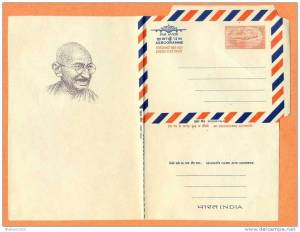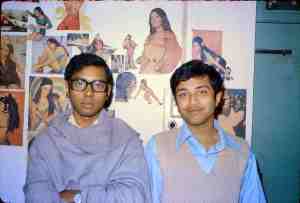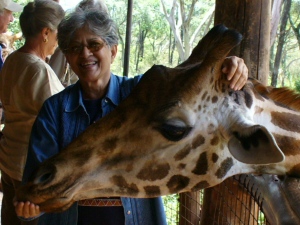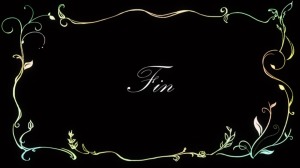 1972 was a very good year to join the IIT Kanpur Chemistry Department as an MSc student. Some 15 of us, bright eyed and bushy-tailed for the most part, did. There was an incredible air of modernity about the place, from the architecture, to the teachers, their teaching, the labs, the hostels, the facilities. The passing years have coloured the memories and blurred some of the edges, but nevertheless, I can still remember the freshness of the campus and the feeling that we had arrived somewhere special.
1972 was a very good year to join the IIT Kanpur Chemistry Department as an MSc student. Some 15 of us, bright eyed and bushy-tailed for the most part, did. There was an incredible air of modernity about the place, from the architecture, to the teachers, their teaching, the labs, the hostels, the facilities. The passing years have coloured the memories and blurred some of the edges, but nevertheless, I can still remember the freshness of the campus and the feeling that we had arrived somewhere special.
Most of us- barring the Delhi University sophisticates- were from colleges in somewhat provincial universities. And in those days, universities in Madras, Kolkata, Pune and Bombay all were to varying degrees provincial, and we had classmates from Madurai, Kolhapur and Burdwan as well… All plagued by poor and outdated syllabi, bad teaching, the works. Many of us were also scholarship holders of the National Science Talent Scheme, that great initiative of the NCERT, and we had been exposed to some of the more modern ideas, so we knew the good places to go to. And without doubt, IIT-K was the place to go to if you wanted to do chemistry, with the added attraction that if one did reasonably well, it was a direct line thereafter to the US aka “Fatherland”.
The Chemistry Department, to put it mildly, was rocking! Our teachers were (and many still are) legendary. Almost from day one, the classes were in a completely different category from what we had been used to- no notes for one thing, surprise quizzes, open book examinations… It was not unusual to get homework from the latest issue of JACS, the Journal of the American Chemical Society- giving us the feeling that this was what an international education was all about. And it was.
Arguably, the Chemistry Department at IITK in those years was competitive with the best in the US. The faculty line-up was exceptional and the publication standards were better than most. All the big names were there- and let me not name them, the faculty at that time was the who’s who of Indian chemistry. But more than being famous, they were really inspirational. I can still recall- almost verbatim- a course in Group Theory that we all took in the second or third semester (another innovation in 1972!). And the course in Synthetic Organic Chem. or that in Phys. Chem… The geeks amongst us (mostly all) had it good.
It was a time, the first that I remember, when I was immersed in a group that, by and large, loved a subject. We talked chemistry, did homework together, did projects (some crazier than others). My undergraduate years had been spent largely in goofing off- most of those who came to the BSc course were there to pick up a degree and move on to the rest of their life- IAS, MBA, whatever- and the few who were interested in the life academic were oddities.
 Peer group pressure (and there was plenty of it!) and teachers apart, there was a steadily growing set of seniors that were setting standards. The ones who had gotten into Harvard, or Chicago, or wherever. The ones who had written research papers as MSc students (and in Nature, no less). The ones who were clearly going to be the next big things… This made us, for the most part, academically very ambitious. In the days before rankings had reduced everything to labels like top ten and so on, there was mostly reputation to go by, and when we applied, the bar was always set high. A few in our class decided not to go on with a Ph D in chemistry- IIM Ahmedabad and BARC were the alternate choices, but for the rest, the next step was to Harvard, Princeton, Berkeley, Chicago, Indiana, SUNY, and so on. But in 1973 the level of competition that one sees today was just not there; all it took to make an application was a respectable GRE score and an aerogramme…
Peer group pressure (and there was plenty of it!) and teachers apart, there was a steadily growing set of seniors that were setting standards. The ones who had gotten into Harvard, or Chicago, or wherever. The ones who had written research papers as MSc students (and in Nature, no less). The ones who were clearly going to be the next big things… This made us, for the most part, academically very ambitious. In the days before rankings had reduced everything to labels like top ten and so on, there was mostly reputation to go by, and when we applied, the bar was always set high. A few in our class decided not to go on with a Ph D in chemistry- IIM Ahmedabad and BARC were the alternate choices, but for the rest, the next step was to Harvard, Princeton, Berkeley, Chicago, Indiana, SUNY, and so on. But in 1973 the level of competition that one sees today was just not there; all it took to make an application was a respectable GRE score and an aerogramme…

This post actually started out as a long answer to a short question by one of my students as to what “were your thoughts then? On aspects of academic/extra-academic life… I mean, how did you see the world that time?”. Truth be told, the thoughts were all in the short term. Very short term (as the pictures on the hostel room wall might suggest). Competition was strong, so one wanted to be at a local maximum at the very least, but one could also see what the milieu was throwing up. The B. Tech. batches were very gifted and this was before the coaching classes had dulled the sheen of the JEE rankings. The talents were visible and aplenty, with enough 10. someones, as well as the clearly very cool set. The faculty was very liberal- in some ways more than what we see now: I recall, as an MSc Chemistry student, taking MSc and Ph D courses in the Physics Department, for credit. Not too many questions asked, and it figures on my transcript. (At the two Universities where I have taught recently, I can say with certainty that if this happened at all, it happened with much sturm und drang.)
And our teachers experimented with pedagogy. With a lot of thought, as even a casual look at the course curriculum would tell- it is, even now, a surprisingly modern curriculum. And with an ability to change. Willingly, as some teachers introduced Bio into Chem (it was not that common then) and unwillingly, as when some of us trashed the attendance requirement and told the instructor we would only do tutorials and the final exam, not go to his classes.
There was a downside, of course. We did not share a certain kind of easy friendship that a less competitive atmosphere might have engendered. Of my 14 classmates, I have not met 4 in the last 40 years, and only 4 of them more than once or twice in all that time. Five of our class chose careers outside science, four were in industry, one went to a national laboratory. Academics eventually attracted only five of us, two in India and three in the US, making the connections more and more tenuous with the passage of time. And now most of us are reaching retirement, so in retrospect, and there is only retrospect now, this was a major shortcoming. A sense of community certainly helps beyond the science, and grass being greener apart, I think that other groups of the same times have bonded better. Maybe it was that we were only together for two years- not a long time, admittedly- but still.
![]() But there was more, much more to IIT K than just the classes, and enough attention to these aspects had been given when the institute was set up. Extracurricular activities apart, there was an airstrip, and a TV station as well- that actually broadcast programs on campus, including the 1973 England vs. India test match that was played in Kanpur, Gavaskar and Bedi being the stars then. And as for the airstrip, I’ve forgotten the chap’s name, but his nickname was Pilot because he knew flying, and I- in retrospect foolhardily- went up with him in a glider. Given the level of safety that we all subscribed to, its a miracle that there were no major accidents! (I would do it again gladly, of course.)
But there was more, much more to IIT K than just the classes, and enough attention to these aspects had been given when the institute was set up. Extracurricular activities apart, there was an airstrip, and a TV station as well- that actually broadcast programs on campus, including the 1973 England vs. India test match that was played in Kanpur, Gavaskar and Bedi being the stars then. And as for the airstrip, I’ve forgotten the chap’s name, but his nickname was Pilot because he knew flying, and I- in retrospect foolhardily- went up with him in a glider. Given the level of safety that we all subscribed to, its a miracle that there were no major accidents! (I would do it again gladly, of course.)
But to get back to the title of this post, the IIT-K Chemistry department was, in many ways, the progenitor of many others that were set up in the 70’s both in style and in content. Many of those who taught us were to leave shortly thereafter to take up positions in Hyderabad, Kolkata, Bangalore and elsewhere. In a sense, the research and teaching culture spread, and flourished.
There is a very real Masonry of IIT-K Chem alums: strong ties bind us to where it all began. For all of us- teachers and students alike- this was a great initial condition to have.




